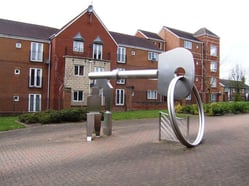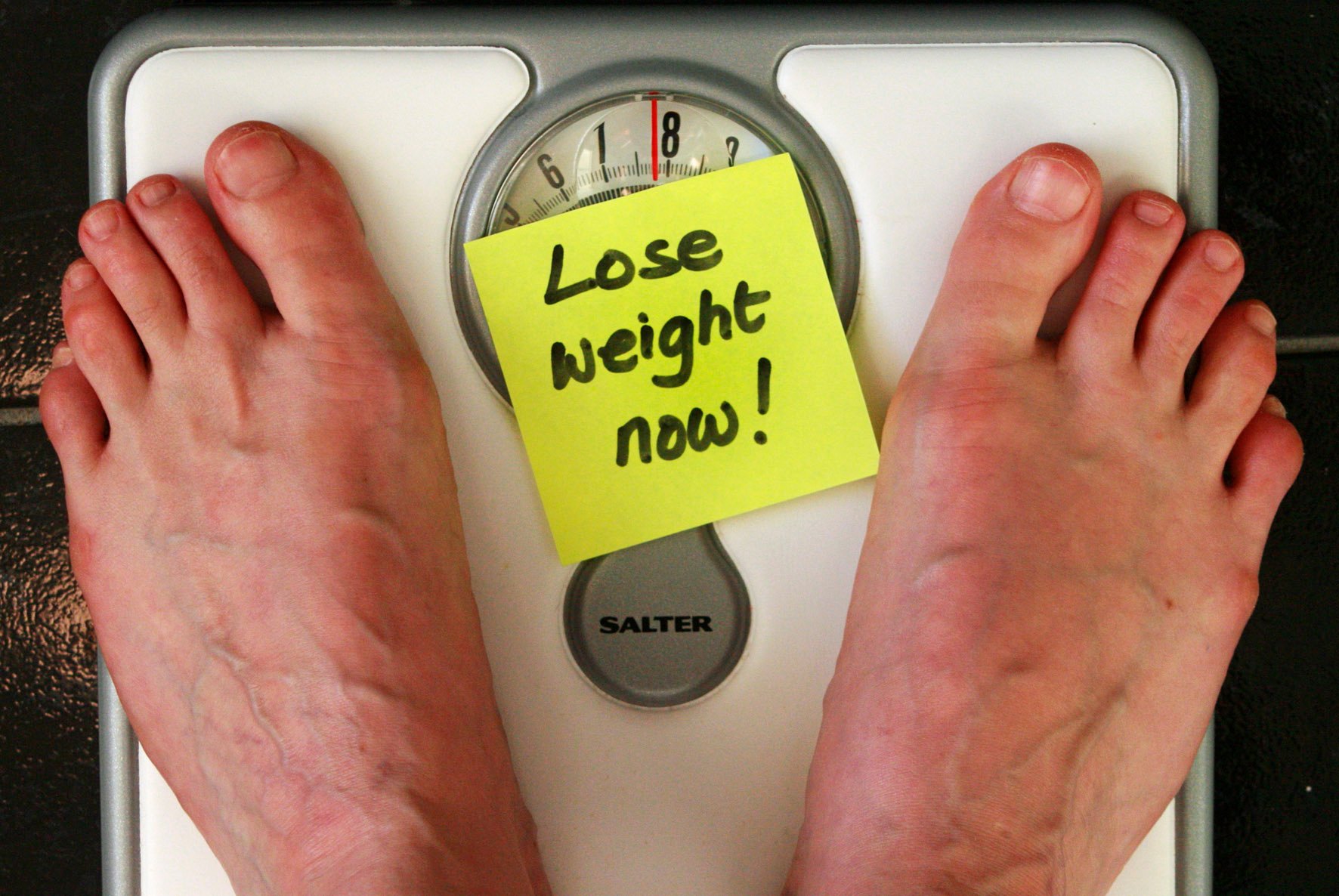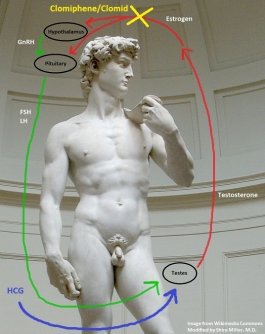All too often when going in for an office visit with their doctor, patients typically only get 13-24 minutes at most to ask questions, get answers and explanations to their health concerns. For many, this comes with a bit too much medical terminology and a bit of “foreign” language that is not very well understood by the patient.
Much of the dialogue and confusing medical terms and language go right over many people's heads. So, they then leave the doctor’s office with a pill for their ill with not fully understanding what is going on or, receiving any type of educational insight as to what they can understand better in their efforts to improve their health from a systematic approach.
.jpg?width=300&name=Keep_it_Simple_(3340381990).jpg) In this article, we are going to “dummy things down” a bit and try to speak with simple language and analogies. The goal here is to help readers understand what high blood glucose and/or A1-C mean and, what happens when they over consume too many “sugary” type of carbs and, do it too often. All this, as it pertains to concerns with type 2 (adult onset) diabetes.
In this article, we are going to “dummy things down” a bit and try to speak with simple language and analogies. The goal here is to help readers understand what high blood glucose and/or A1-C mean and, what happens when they over consume too many “sugary” type of carbs and, do it too often. All this, as it pertains to concerns with type 2 (adult onset) diabetes.
We will look at how your body responds when you do this and what happens under a couple of different circumstances - again, with easy language and analogies in an effort to envision what is going on in the most simple way.
Want to jump right to a section of this article? Click here below:
- Understand the basics
- Understanding "slow" vs. "fast" carbs
- How glucose is damaging our circulatory system
- Solutions
In today’s modern world that has fast & processed foods around every corner, it is easier than ever seen in human history to consume more “heavy duty” calories than ever before. Many of the typical foods that humans in industrialized areas of the world are consuming, are hyper loaded with refined carbohydrates and sugar. This, is largely contributing not only our growing waistlines seen on the outside, but also to the damage inside as it negatively relates to diabetes, heart health, inflammation, hormones and in simple terms; our overall health and how we feel each day.
Consuming Too Many Carbs?
I’m sure we’ve all heard… You high have a quick sugar & energy high, then come down just as fast. It can lead to diabetes... It is bad for your skin... And, it contributes to being fat and nephropathy problems... The list goes on right?
These all too often, are the typical pieces of feedback and insight given by experts. They are indeed correct and all, but often with explaining only the consequences.
But… what actually HAPPENS within your body in a more specific way? And why? And I say specific in such a sense to be explained in easy language without confusing medical terminology.
- If you could actually envision what is going on, would it help make more sense with a little basic education and therefore, enable you to make better decisions with food consumption and lifestyle choices to better one’s health?
- Would it help some to avoid damaging choices, if they could understand the consequences a bit better (and more clearly)?
Let’s take a shot at SIMPLY explaining some of this…
Understanding The Basics
First, let’s take a simple look at how the body prefers to use carbs after you consume them: 
- After your foods are digested and then via the heart, pumped around into the circulatory system; your body will want to utilize any of this glucose at that time for any of its immediate energy needs.
- Next, along with the body realizing that it needs to address glucose (sugar) floating around in the circulatory system “highway” (we can call this CS Highway), the pancreas releases insulin.
- We can think of insulin as like a cab driver who drives around on the CS highway looking for hitchhikers to pick up and get them somewhere they can call “home”. Insulin is like a special “key” that matches and unlocks the door of receptor sites throughout the body to allow glucose in.
- The body will first prefer to store this excess glucose in the muscles in the form of glycogen (fancy word for carbs/energy for later use). IF the muscles have room, they will “invite” the insulin to “Unlock the door” and stow away the glucose.
- Next (or if) the muscles are full or, the “locks on their doors” are being “blocked” by too much fat (due to being obese); Insulin will NOT be able to open the door and get glucose in.
- The next option is that insulin will knock on the door of our liver and say “hey liver; you have some room in their to house some glucose?”.
- IF the liver has a “No vacancy” sign and refuses due to being at full capacity, the body then has to take further steps to convert this excess glucose (and energy) into fat and store it (on the body) for later use (this, is one main reasons for us holding body fat but not sole reason). This, is what often happens with overeating coupled with a lack of physical activity or, exercise.
There is technically a bit more that can happen here given an individual’s circumstances, but again; we are trying to keep things as simple as possible with the language here for an easy understanding.
This process can happen faster or slower and less or more frequently, depending on the eating habits and food choices each individual makes. We will go over that here in a moment.
Understanding “Slower” Carbs versus “Fast” Carbs
The most simple and broken down form of “energy” as it pertains to carbohydrates in their usable form by the body, is glucose. Consuming soda or Gatorade is essentially consuming this. This, would be an example of a high glycemic carb - or, a “faster” carb. Once these types of carbs are consumed, they are “ready to go” and no “processing” has to be done. The flood gates open and a rush of glucose quickly dumps into the circulatory system.
Consuming say, some yams and colorful vegetables is going to take a bit longer for the body to break these type of carbs down, break em down a little more and yet a little further until some glucose is finally then yielded from them where this end product glucose, slowly - bit by bit... gets “sent out” into the circulatory system for use. This, would be an example of a lower glycemic carb -or, a “slower” carb.
A Story About Fast Carbs
You consume a big ol’ bowl of carb loaded cereal and top it off with a tall glass of dairy milk (which has even more sugar). In a very short period of time, the flood gates from the gut open wide and glucose pours into the CS Highway.
The body quickly realizes and thinks “whoa… lots of sugar here and pulls out the megaphone yelling; “PANCREAS!! We need insulin, pronto!”. The pancreas releases our “cab driver” Insulin to head out onto the CS Highway and transport and help stow this circulating glucose away.
Now, if you just completed an intense workout in the gym; these carbs could be okay and in most cases, good. To explain this scenario of post workout: Think of your muscles like sponges that want to soak up and store glucose in the form of glycogen. Our muscles prefer to have this on hand to exert energy and force with muscle contractions and actions when called upon later. If you workout hard and squeeze your “sponges” out during the workout, they of course would be a bit “dryer” after - correct?
So, if you expose these sponges to water (like carbs/glucose) they will be more apt to “soak them up”! For most and for these reasons; consuming some of these carbs post workout is a better time to indulge - if you must!
So, unless you just did a grueling intense workout for an hour or so in the gym, there is a good chance your body may not store all this glucose in the best way assuming you have not been too physically active and your calories in severely override your calories (energy) out.
So, if you are eating this big bowl of carb loaded fruity pebbles (my favorite) and you haven’t worked out or been seriously physically active in a long time; our cab driver insulin may have a tougher time housing this excessive and unneeded glucose in a preferred way.
The scenario here below is where one has not been physically active, has been consuming more calories than needed and especially consuming too many refined carbohydrates from too many manufactured, modern foods. 
- Cab driver insulin: “Hey muscles; you have some room to take in some of this glucose?”
- Muscle: “No. Full”
- *NOTE: ^^^OR… the “lock” has been gummed up with fat and insulin can’t quit get the key in to unlock the door.
- Moving on… Cab driver insulin: “Hey liver; you have some room to take in some of this glucose?”
- Liver: “No. Full”
And so the process goes on where the body takes steps to store this extra glucose, as body fat, as stored energy for later use. This time however, it is just in a different form of stored energy. And, if too much body fat is accumulated, it can start to negatively disrupt endocrine systems, add excessive load on one’s frame to contribute to joint pain and much more over time.
Loitering Glucose Vandalizing Our Circulatory System Highway
If similar processes such as this continue for long enough, the accumulated obesity as mentioned can “block the lock” on the surface of muscle receptor sites, defeating insulin’s attempts to “unlock” the door and let insulin in.
This can also leave the muscles “hungry” for glucose where more signals are sent out yelling “we want glucose!!” The liver (which stores glycogen/carbs) then responds and releases more glucose (which often, is NOT needed). This in turn, has an even higher yet elevated level of blood glucose; then, more insulin is released.
This process repeats. Again… And, too often.
Eventually as it pertains to type 2 diabetes suspicions and concerns here, the receptor sites (these doors with locks, that should store circulating glucose) become resistant to insulin. The insulin is no longer able to do it’s intended job. Circulating glucose levels rise more. The damaging effects slowly start to add up…
Let’s think of our circulatory system as sort of like a network of thin hoses and excessive glucose like sand.
If you were to take sand and just rub it on your skin back and forth for an hour, it would start to scratch and create some inflammation on your skin - you can imagine this correct?
What if you did this all day, every day? It would then probably start to leave scar tissue and lesions from the damage, yes? In it’s own way, this is essentially similar to what is going on in our story here.
Now, add in other things such as high triglycerides and cholesterol circulating in this now damaged CS Highway with inflammation. Cholesterol can get “stuck” inside the cracks inside these arterial walls of these thin “hoses” we are associating with our circulatory system.
Hopefully, we can envision how this can lead to hardening of the arteries due to scar tissue build up, and then blockages, etc.
Thumbs down to all this; I hope you agree?
Solutions to Clean Up The CS Highway
It is easy to say something like “eat less and exercise more”. It is also easy to resort to just taking a pill for an ill, which often is concluded as the easiest solution. Although some medications such as Metformin do in fact have some impressive benefits, putting forth some effort to improve one’s health from a systematic approach has an incredible potential for short and longer term benefits!
So, what does a systematic approach look here?
A good starting point is engaging in a consistent weight or, resistance training program. Another, is changing the way we look at food and consume it. Let’s be a bit more specific, but still keep it simple...
Weight/Resistance Training
Weight/resistance training done appropriately, helps to build muscle. Remember the sponge analogy? With some moderate to intense training sessions here, you essentially will help “wring out” these sponges (muscles), burn off some calories and increase the body’s ability to “soak up” carbs that are consumed much better.
 Over time, weight training can help to build more muscle which essentially act as more and new “storage houses” for circulating glucose. Along the way with correct eating habits, one should also start to decrease body fat as well; remember the analogy of fat “blocking the keyhole” that insulin wants to get in and unlock?
Over time, weight training can help to build more muscle which essentially act as more and new “storage houses” for circulating glucose. Along the way with correct eating habits, one should also start to decrease body fat as well; remember the analogy of fat “blocking the keyhole” that insulin wants to get in and unlock?
Easier said than done for many folks here, I can empathize with that. Especially if there is confusion on where to start or, when there is little to no experience in the gym.
And, some fear wasting money on the wrong trainer who may not provide benefit. However, seeking out a qualified personal trainer in your area is often a great starting point for many and you can learn on what to look for (and avoid) in a trainer HERE.
You can also search for certified personal trainers in your area who’s degrees or certifications have been verified, HERE
Eat Foods Like This…
For the majority of Americans that have concerns with type 2 diabetes stemming from high blood glucose and/or A1-C lab results, flaws in eating habits typically have been largely contributing.
One of the most simple ways of thinking about and making the best food choices is this: If it grows out of the ground, off a tree, lives off the land or in the water; then it is probably good for you. If however, it comes in a box, bag or bottle and is made in a factory; then it probably is NOT good for you.
A healthy meal often has color to it, literally. As for the dozen of diets being pushed around, they all restrict calories in one way or another. Some may be helpful short term but rarely, long term. Incorporating the simple advice mentioned above will in fact do wonders for the majority of those faced with a risk of type 2 diabetes in their efforts to lower blood glucose, A1-C and improve their health from a systematic approach with these two simple things incorporated.
One last note regarding nutrition and eating habits; naturally as humans, we gravitate towards safety and comfort. Although willpower can get us going, it can only take us so far. In other words, if we truly are not happy and comfortable eating healthy for whatever those reasons are (speaking from psychological standpoint), we need to seek out and understand why.
When it comes to eating unhealthy foods that damage our health and well-being, we MUST become uncomfortable with this and grow a disliking for doing so.
We also must simultaneously start to find and experience reward and comfortable feelings of safety with eating healthy. For many, this comes with some exploration within ourselves to discover these things. Once we do, we can then apply this to our efforts in making the correct and necessary changes in our eating habits to make the healthiest changes possible!
Summary
Like a spiderweb, this conversation could take a dozen turns with more details and talk. Hopefully, the analogies and language were simple enough to help you envision the basics of what is going on when it comes to having concerning and elevated levels of blood glucose and/or A1-C. 
Having a diagnosis of diabetes is nothing anyone should be okay with. Having just a little bit of an understanding of the process and why it happens in order to avoid putting more fuel on that fire, hopefully gives some motivation to then implement some positive changes to look and feel our best; we all deserve that!
Optimizing and maintaining superb levels of our hormones is critical to living our best life in our fittest body possible, no doubt the team at YOUTH-Rx believes in that. But, having healthy lifestyle habits such as ones mentioned here is also just as important.
With that, comes taking some ownership of how we treat, feed and work our bodies on a regular basis. It is up to each of us individually to assume that responsibility and piece, to each of our pictures (and sometimes puzzles) of wellness.
Healthy regards,
Roger and the YOUTH-Rx Team
Cited References:
https://www.statista.com/statistics/250219/us-physicians-opinion-about-their-compensation/




